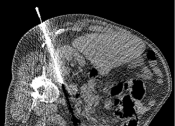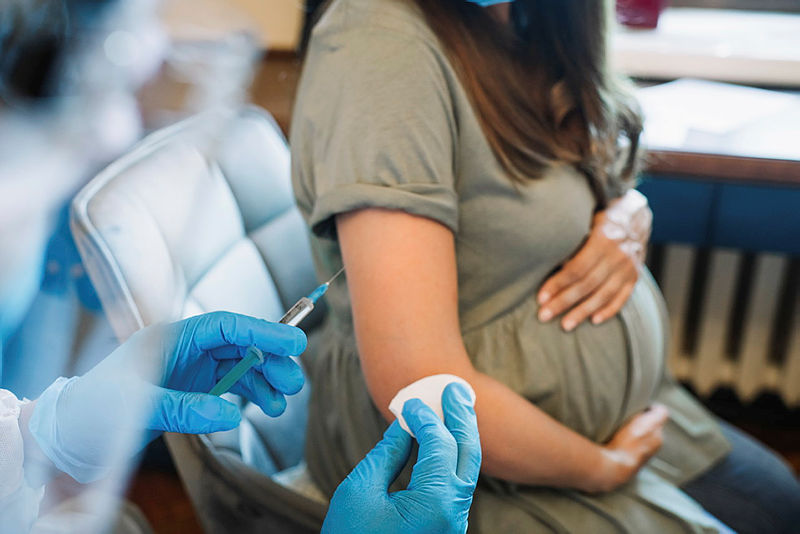
BMC Genomics – Exploring the ageing methylome in the model insect, Nasonia vitripennis

Epigenetic changes, based on dynamic DNA methylation patterns, have been consistently associated with aging processes. However, much about aging is currently based on two model organisms, Drosophila and C. elegans, that lack detectable DNA methylation. This study introduces Nasonia vitripennis, the jewel wasp, as an innovative model for the epigenetics of aging. Like current model organisms, Nasonia is easy and cheap to keep in a laboratory, has a short, characterized life cycle, and a sequenced genome. In addition, it features a functional DNA methylation system, although it has not been studied in the aging process.
To fill the gap, the authors measured for the first time its methylome using whole-genome bisulfite sequencing followed by methylation analysis. They identified several sites that are age- and sex-specifically methylated and they constructed an epigenetic clock containing 19 sites correlating epigenetic changes and chronological age. Contrary to mammalian aging, in Nasonia DNA methylation increases with age; females, generally living longer than males, display lower methylation levels as they age.
Although there is no direct correspondence between epigenetic clocks in Nasonia and humans, some intriguing functional overlaps exist, delivering Nasonia a first success as a model organism. Only time will tell if the jewel wasp can help suggest potential anti-aging interventions.
BMC Public Health – Differences in children’s exposure to television advertising of unhealthy foods and beverages in Spain by socio-economic level
 Spain has one of the highest prevalence of obesity in Europe, mainly affecting lower class people. Socio-economic inequalities regarding eating habits and obesity are linked to the influence of advertising on food preferences and consumption. In this study, the exposure to advertising of foods and drinks is measured using a remote control device among 1590 Spanish children and adolescents, and crossed with the nutrient content profiles defined by the World Health Organization.
Spain has one of the highest prevalence of obesity in Europe, mainly affecting lower class people. Socio-economic inequalities regarding eating habits and obesity are linked to the influence of advertising on food preferences and consumption. In this study, the exposure to advertising of foods and drinks is measured using a remote control device among 1590 Spanish children and adolescents, and crossed with the nutrient content profiles defined by the World Health Organization.
The results show an average of 10 commercials received per day, with most food and drink commercials being about unhealthy products and occurring within the evening, the peak child-audience time in Spain. The exposure of lower class participants to unhealthy products was double compared to higher social ones.
The observed exposure to unhealthy food and drink advertising is accounted for by the absence of regulation in Spain: there is nothing more than a voluntary code of conduct on food advertising targeting under-12 children, and it does not regulate the nutrient profile of the advertised products nor the broadcasting frequency. A recently proposed statutory regulation has been opposed by food and advertising industries, while civil society organizations are concerned not only to protect Spanish children from exposure, but also to reduce health-related social inequalities.
BMC Biomedical Engineering – Needle artifact reduction during interventional CT procedures using a silver filter

Metal surgical devices such as trocars can generate metal artifacts in interventional procedures guided through computed tomography, used for example in biopsies. This makes the detection and visualization of target elements more difficult, which is a problem especially in operations where precise positioning is essential. Recently, specific proprietary algorithms have been proposed for metal artifact reduction, but these may modify the non-artifactual image data while processing the artifact area and are not always available for real-time application, required in interventional imaging.
In this study, the authors investigate the use of a 0.5 mm silver filter to reduce metal artifacts The proposed method is based on the already known capacity of silver, similar to tin, to harden the X-ray beam, increasing the effective beam energy. A number of parameters were evaluated at different locations and different beam energies on an anthropomorphic phantom, describing image quality and the significance of the artifact along the trajectory of the needle.
The study shows that the use of a silver filter can significantly reduce metal artifacts, improving the visibility and the correct location of target structures without changing the overall image quality.
BMC Pregnancy and Childbirth – Equity in prenatal healthcare services globally: an umbrella review

Higher risks of complications during and after pregnancy are associated with inadequate prenatal care, often rooted in systemic factors such as institutional racism, and social and economic inequities. Equity, conceptualized as the absence of differences in access and use among population groups, should be the ultimate goal of consistent health policies.
This umbrella review, including 68 quantitative and qualitative systematic reviews, aims to explore barriers and facilitators of equity in prenatal care. While the first authors of the systematic reviews were mainly from the UK, Canada and US, those of the studies included in those reviews were mainly from Africa and Asia. Although patterns are not always generalizable, similar determinants were found across countries and contexts, with pregnant women belonging to socially disadvantaged groups experiencing difficulties in accessing or receiving care in a wide range of prenatal services. Individual and social factors such as education level, socioeconomic status, rigidity of traditional gender roles led to a greater risk of adverse outcomes and lower utilization of care. Discrimination related with race, ethnicity, culture, language and religion was more common in North America, Europe, and Oceania.
Such a global perspective suggests the need to overcome barriers implementing specific interventions to favor inclusive access to health services. This includes awareness: the authors report that, ironically, the majority of studies did not define equity nor use any conceptual framework.
BMC Medical Informatics and Decision Making – Communicating the results of risk-based breast cancer screening through visualizations of risk: a participatory design approach

Visualization of risk, although it seems trivial, is a hard task. To be effective, it should simplify complex information, be intuitive, and take into account people’s beliefs and experiences. For example, regular breast cancer screening offered at the population-level can cause false positives, overdiagnosis, and overtreatment. According to the experts, the benefit-harm trade-off might be improved by screening women at high risk more frequently than women at medium risk. However, the idea of potential harms in preventive health can be counterintuitive and women in lower risk categories may experience anxiety or feelings of unfairness due to a lower screening frequency.
In this participatory study, women’s perspectives are investigated to develop an effective quantitative and qualitative visual strategy to best inform on risk categories and breast cancer risk-based screening. The involved women wanted to understand their assignment to a certain risk category, preferably visualized in an icon array, and to get advice on risk reduction and self-examination; there was a general misconception that most risk factors are modifiable, while women tended to be unaware of breast density as a risk factor. Therefore, the resulting visual emphasized that risk is given by a combination of factors, including breast density. Similarly, the presented information sheets, reviewed by a board of experts, communicated risk to answer counterintuitive questions and reassure concerned women.
This work is a successful example of how non-specialists can help improve communication in the context of preventive health.
Comments